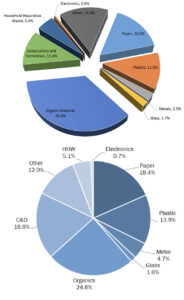By Lynne Smith
For the past year, Lincoln staff and residents have worked to develop a comprehensive Climate Action Plan. A Municipal Vulnerability Preparedness (MVP) Action Grant, provided through the state’s Executive Office of Energy & Environmental Affairs, funded the project.
Over 100 residents participated in workshops, focus groups, and committee meetings to make sure the plan included input from as many members of the community as possible. At most of these sessions, people were eager to meet the challenge of our changing climate, but many said they are not always sure how to do so. The plan prioritizes goals and strategies that will help the town and individuals take action.
A Climate Action Plan is a big deal. In fact, Lincoln’s plan is about 77 pages filled with informative charts, graphs, goals, and strategies. But the plan is only a first step in the process toward its stated overarching goal of “reducing greenhouse gas emission while also advancing community resilience in equitable and sustainable ways.”
Specifically, the plan organizes strategies into the following six planning areas: energy, mobility, built environment, working lands and natural resources, social resilience and education, and water and solid waste management. For each of these areas, three to four “priority strategies” were identified through an evaluation and prioritization exercise. For each strategy, the plan describes the implementation lead, next steps, how it improves equity, potential co-benefits, implementation partners, funding sources, and measures of success.
Priority strategies are not necessarily ones that will be completed first or are the most important, as this exercise only provided a high-level assessment of how beneficial the strategy could be to the community and environment. Any strategies can be tackled when possible (Lincoln is already making progress toward many of them) and this exercise can be performed periodically to update considerations based on new data, changes in conditions, opportunities, and constraints.
Now that Lincoln has a Climate Action Plan, the town is better prepared to apply for more federal and state funding to implement goals and strategies. To access these funds, professional town staff will need to apply for grants and manage their implementation. With limited staff ability and town funding, many of the strategies laid out in the plan will need the community’s help.
At the State of the Town meeting on September 30, Assistant Director of Planning and Land Use Jennifer Curtin will explain more about the plan and the next steps toward implementation. Residents will be able to provide essential input on how we can move forward to achieve our climate goals. Green Energy Committee members will be on hand to talk with residents about how to increase their energy efficiency and reduce their fossil fuel emissions.
To review the Climate Action Plan before the September 30 State of the Town meeting, click here. We look forward to seeing you there!
Lynne Smith is a member of the Green Energy Committee’s Climate Action Lincoln Subcommittee.
“My Turn” is a forum for readers to offer their letters to the editor or views on any subject of interest to other Lincolnites. Submissions must be signed with the writer’s name and street address and sent via email to lincolnsquirrelnews@gmail.com. Items will be edited for punctuation, spelling, style, etc., and will be published at the discretion of the editor. Submissions containing personal attacks, errors of fact, or other inappropriate material will not be published.









